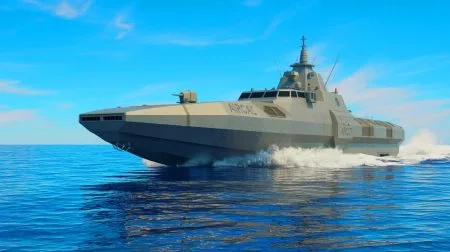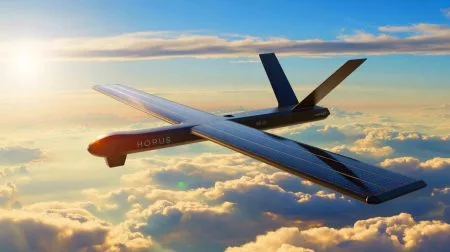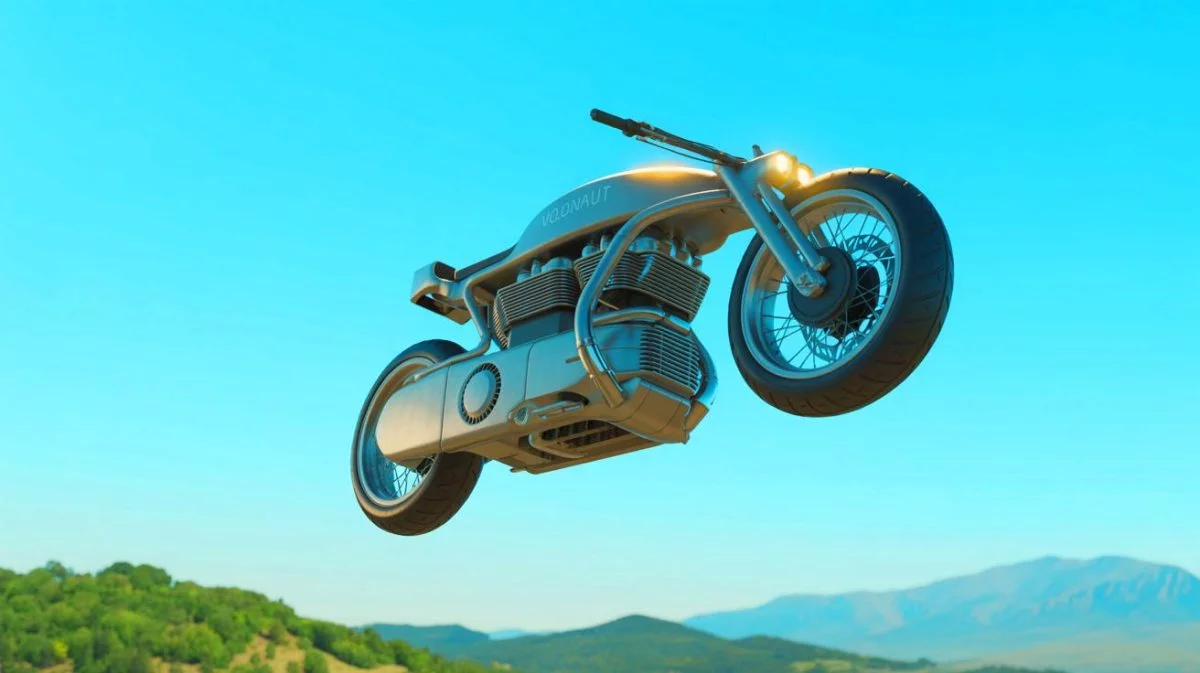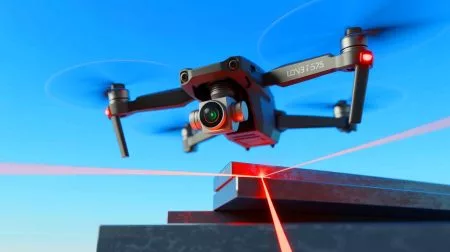| IN A NUTSHELL |
|
Imagine soaring above the treetops on a sleek, jet-powered motorcycle, maneuvering with a simple throttle. This futuristic vision is now a reality with the world’s first Airbike, redefining personal mobility. Developed by Volonaut, in partnership with Jetson Aero, the Volonaut Airbike is a prototype flying motorcycle that offers vertical takeoff capability and impressive propulsion. This innovation represents a leap forward in how we perceive personal transportation.
Understanding the Volonaut Airbike
The Airbike is a compact, single-person aerial vehicle that gives riders the sensation of flying solo through open air without wings, rotors, or runways. Unlike drones or traditional aircraft, the Airbike resembles a motorcycle, but it hovers and glides on jet-propelled thrust. While specific design details remain undisclosed, early footage and insider reports highlight several standout features:
- Two or four jet engines providing vertical lift and horizontal thrust
- An aerodynamic body reminiscent of a speeder bike from sci-fi lore
- Gyroscopic stabilization controls for balance and rider safety
- A lightweight composite frame, likely made from carbon fiber or aerospace-grade aluminum
- Joystick or motorcycle-like controls for intuitive piloting
- A battery or hybrid fuel package enabling around 15–20 minutes of flight time
Volonaut has yet to release final specifications, but the Airbike is already celebrated as the next step in personal mobility.
Jet-Powered Mobility: How It Works
Unlike drones that rely on exposed propellers, the Airbike’s propulsion system appears to utilize miniaturized jet engines or ducted fan engines integrated into a streamlined chassis. These engines generate sufficient vertical thrust to lift a human pilot while additional power propels the vehicle forward.
The Airbike operates like a VTOL jetpack with handlebars, offering full control over pitch, yaw, and altitude. Built-in AI stabilizations help counterbalance turbulence or sudden wind gusts, making it semi-autonomous and beginner-friendly. As an electric or hybrid-powered aircraft, the Airbike produces little noise and no direct emissions, making it quieter and more environmentally friendly than gasoline-powered alternatives.
The Minds Behind the Innovation: Volonaut and Jetson
Volonaut is a spin-off with technical roots at Jetson Aero, the Swedish company behind the viral Jetson ONE — a personal eVTOL that made headlines for making flying cars accessible, or at least plausible. The Jetson ONE gained international recognition in 2022–2023 as a drone-like flight capsule with handlebars offering short recreational flights for tech enthusiasts. Building on this momentum, Volonaut’s Airbike targets a younger, more adventurous demographic: thrill-seekers, luxury aficionados, and early adopters eager to literally take off.
Revolutionary Aspects of the Airbike
The Airbike doesn’t just move — it hovers, takes off, and flies, all without roads, traffic, or noise. It offers a personal mobility experience that feels magical, liberating, and futuristic. Here’s why it matters:
Personal Flight for the Masses
While helicopters and ultralight aircraft require licenses, runways, or pilot training, the Airbike could be flown with minimal certification, akin to recreational drone flight, depending on how regulations evolve.
Technology That Feels Like Sci-Fi
This is not a hoverboard with fans or a gimmick. It is actual jet propulsion, shrunk to a package small enough to ride like a motorcycle.
Sustainable and Compact
If powered by batteries or hydrogen fuel cells, the Airbike has the potential to be emissions-free while requiring no roads, garages, or infrastructure beyond a charging station.
Potential for Media, Rescue, and Military Use
The Airbike is not just for fun. Future versions could be used by first responders, soldiers, nature photographers, or scouts to provide rapid aerial access to areas inaccessible by vehicles or drones.
Challenges and Limitations: Not Quite There Yet
As exciting as the Airbike is, it is still a prototype — and practical deployment is several years away. Significant challenges remain:
Limited Flight Time
The current estimated flight duration is 15–20 minutes, limiting use to short pleasure flights or tests. Extending range will require significant advancements in battery technology or alternative fuel solutions.
High Costs
With an anticipated price similar to the Jetson ONE at $100,000, the Airbike will initially remain a luxury item rather than a commuter tool.
Regulatory Hurdles
Most countries have yet to establish laws allowing unmanned personal eVTOL vehicles to fly freely. The Airbike’s acceptance depends on the rapid development of drone flight regulations, airspace zones, and pilot safety rules.
Learning Curve
Even with AI stabilization, flying a jet-powered machine requires skill, caution, and spatial awareness. Pilot training will be essential.
The Path to Mass Adoption
The Volonaut Airbike represents a first concept of a new generation of transportation. It is comparable to the first smartphones or electric cars — initially incredible, expensive, and rare, but a signal for what is to come. With improvements in battery density, declining costs, and evolving regulations, we may see in the next 5–10 years:
- Airbike tours at tourist destinations
- Racing leagues for flying motorcycles
- Urban air parks where riders can fly safely
- Civil rescue units equipped with flight-capable bikes
Companies like Volonaut, Jetson, XPENG, and Alef Aeronautics are already competing to bring personal air mobility into the mainstream. The Airbike could be one of many that soon follow.
The Volonaut Airbike is not just a new vehicle — it is a new category of movement, one that defies roads, gravity, and expectations. It takes something familiar — a motorcycle — and lifts it into the sky. While these are still early days, the arrival of the Airbike proves that personal flight is no longer science fiction. It is real. It is here. And it is only going to rise higher. Are you ready for an adventure in the skies?
Did you like it? 4.4/5 (22)








Wow, ce truc a l’air sorti tout droit d’un film de science-fiction! 😍
Combien coûte réellement cet engin volant? Est-ce que c’est abordable pour le commun des mortels? 🤔
15 à 20 minutes de vol, c’est un peu court, non? J’imagine mal faire des trajets quotidiens avec ça.
Merci Volonaut, vous faites rêver les passionnés de technologie! 🚀
Je me demande à quel point c’est sécurisé. Est-ce que quelqu’un a déjà testé un crash? 😅
Bravo pour cette innovation, mais je reste sceptique sur l’adoption de masse à cause des régulations… 😬
Ça va être compliqué d’utiliser ça en ville avec tout le trafic aérien potentiel.